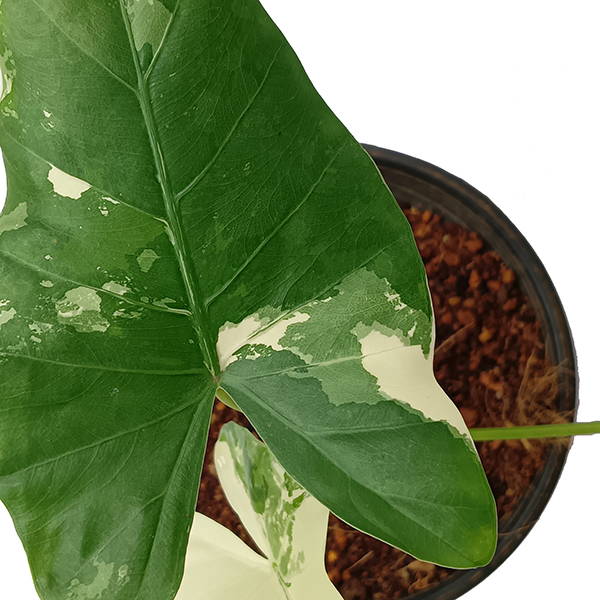Peperomia Care
Common Name: Pepper Face, Baby Rubber Plant, String of Turtles, Parallel Plant
Botanical Name: Peperomia spp.
If you have a brightly lit space and are a little forgetful when caring for your houseplants, you might have met the perfect genus! Mostly all of the peperomias are considered easy care indoor plants because they do not require a lot of water. They thirst, instead, for brightly lit rooms where they can grab all of the indirect sunlight they need to grow. Most of the thicker-leaved varieties can be treated like succulents as they retain water in their waxy leaves. It’s no wonder that this plant genus is in the pepper family. There are so many spicy varieties to collect and grow: from some with leaves shaped like cute little buttons (Peperomia prostrata) to others resembling a watermelon rind (Peperomia argyreia). With a bit of pruning, you can keep these plants compact and free from needing stakes. If you prefer to let them gain height, try staking them up to help them reach new heights. When you think it’s time to up-size the pot for your peperomia, go up only one pot size (the diameter measures pots). Peperomias have shallow root systems and can thrive by being in smaller containers.
Shop Peperomia Collection
Light
Peperomias prefer medium bright indirect light. For this type of light, it is best to place them in front of a south- or west-facing window or close to (but not in front of) a north- or east-facing window. They can tolerate medium light, but they’ll become weaker and leggy and produce fewer leaves in low light. Learn more about light requirements for indoor plants.
Water
Peperomia with waxy leaves like to have the soil dry out between watering; ones with softer, thinner leaves need to be watered more often. A moisture meter can help determine when it’s time to water your plants, but sometimes your finger is a better gauge!
Soil
Peperomias love good drainage and a soil mixture containing pumice, perlite, or wood chips to provide the drainage they need! Most bagged potting soils will be adequate for transplanting any type of peperomia. Consider mixing in cactus potting soil to help with drainage. If you decide to transplant them (we do not recommend transplanting your new plants for at least 3-6 months after receiving them), make sure you do not damage the roots as they are shallow and sensitive to being disturbed.
Temperature
Temperatures between 60-80℉ are ideal, and they can withstand temps as low as 55℉. However, these tropical houseplants love warmer conditions, so the warmer, the better! Keep your peperomias away from cold drafts and frequently used doors in the winter time to avoid shocking them.
Humidity
As with most tropical indoor plants, peperomias benefit from higher humidity, but will do fine in average household air.
Fertilizer
Peperomias are not heavy feeders, so you can fertilize them once a month during the growing season with a complete liquid fertilizer at 1/4 the recommended strength, or you can top dress the soil with worm castings, or a rich compost once in the early summer. Remember to water your plants after applying granular fertilizer and water them before adding liquid fertilizer!
Growth Rate
Peperomias are medium growers and depending on the species (and care) they can produce 4-12″ of growth in one growing season!
Pet Friend or Foe
Peperomias are non-toxic. Friend!
Pro Tips
When re-potting your peperomia, use a soil that has good drainage to discourage water-logged soil and do not disturb the roots!
Peperomias do flower, but the blooms are small. Feel free to cut them off to encourage more foliage development.
Leach the soil once a season to flush out salt build up. Fertilize with a complete liquid fertilizer or top dressing of worm castings after leaching the soil.
If you find your peperomia is not growing or dropping leaves, consider moving it to a brighter setting and monitor the soil for dryness.
It is always better to lean toward dry soil if you are unsure whether or not to water your Baby Rubber Plant!
More Plant Care




